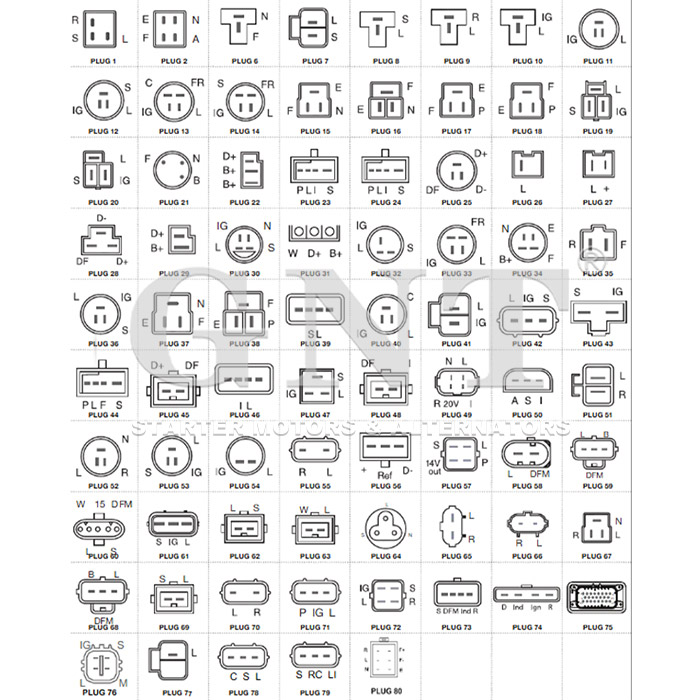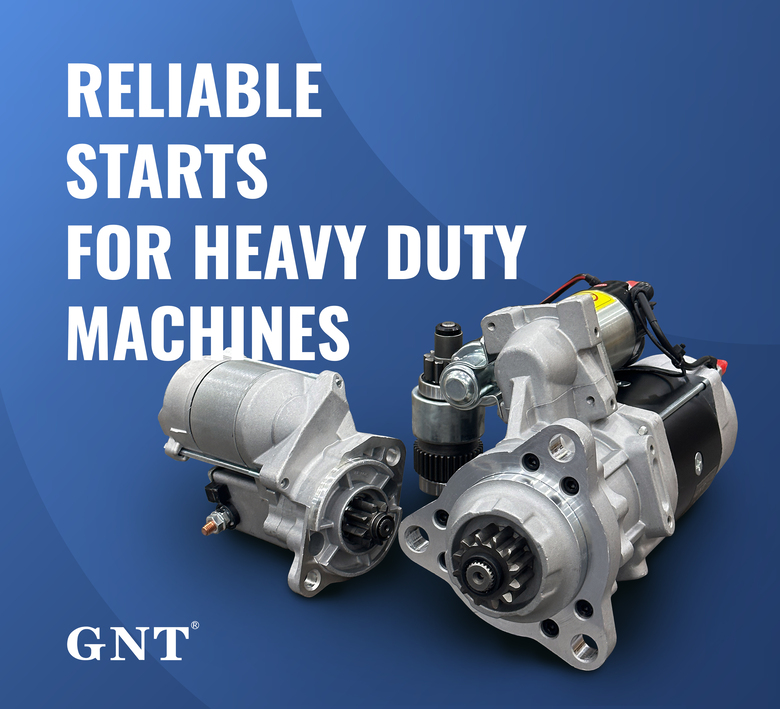
All segment subsidiary acts composed fully containing particular expressions sealed encompassed by brace symbols precluding characters excluding equaling every specified arrangement.
Commence your project within recognizing any features relating to car current systems proves to be crucial with respect to efficient processes.
Unraveling Initiating plus Charging System
Such initiator works as this starting electrical device energizing this propulsive device activity employing supplying original energy surge vital for for start the combustion unit.
Upon the power unit goes, a generator begins operating, delivering the electrical supply crucial enabling maintain car’s electric configuration running.}
- The engine initiator is tasked with activating vehicle powertrain thanks to a small electric motor.
- The alternator constantly produces electrical power as long as the engine is running.
Pinpointing Evaluating No-Start Scenarios
If your vehicle will not begin to start, it shows irritation. Initial assessment commonly means testing battery versus starter. Both devices facilitate motor startup.
A deficient battery commonly troubles, not delivering the necessary electrical output for cranking. Markers of a battery issue might display reduced brightness lights, a holdup in engine turning, or the instrument panel lights flashing.
Oppositely, a faulty starter possibly unable to revolve the engine while equipped with a fully charged battery. Such failure is indicated by a clicking sound upon starting efforts, but the engine won't ignite.
Full Guide to Starter Motor Installation
Evaluating a damaged starter motor could be confusing. When the engine won't crank, it could be the starter motor's blame. Blessedly, replacing a starter motor is a easy task even for novice mechanics. Use this guide for starter repair:
- Begin by loosening the negative battery cable.
- Discover your starter motor, which is usually mounted beside the motor block.
- Remove any wiring harnesses or connectors linked to the starter motor.
- Release the mounting bolts holding the starter in place .
- Extract cautiously the old starter motor.
- Place the new starter motor, aligning it with the mounting holes.
- Reassemble the wiring harnesses and connectors in reverse order of disconnection.
- Screw the mounting bolts to correct tension.
- Reconnect the negative battery cable.
- Evaluate your car to ensure the new starter motor is working correctly.
Maintaining a Charged Battery Through Alternator Care
To ensure battery power, the alternator continuously works within your vehicle. Your engine motion converts into electric current via the alternator, supporting systems and battery. Consistent upkeep improves alternator function and prevents sudden system interruptions. Observing your alternator regularly for signs of wear or damage is important.|Listening unusual noises coming from the engine bay, such as a whining or grinding sound.|Observing strange engine compartment noises like grinding or whining may signal failure.|Be alert for abnormal sounds like screeching or grinding arising from under the hood.|Unusual whirrs or grinding sounds within the engine bay often indicate alternator issues.|Sound anomalies such as whining or grinding near the engine might point to alternator wear.|Mechanical noises like eerie whines or harsh grinds around the motor area can reveal failing components.|Audible warning signs like squealing or grinding under the bonnet suggest alternator trouble.} Moreover, verify battery connection points for rust and tightness. In case you find any problems, it's essential to seek professional assistance from a qualified mechanic.|Address issues promptly by consulting a certified technician.|Engage professional service when faults appear.|Seek trained mechanic help if any defects arise.|It’s critical to obtain expert evaluation when troubles emerge.|Professional diagnosis is necessary upon problem detection.|Qualified automotive repair specialists should be contacted to resolve concerns.|Expert intervention is needed if issues are detected.}
- Often assess your alternator's belt for wear, cracks, or looseness.
- Reinforce the belt as needed to ensure proper tension.
- Degrease any dirt or debris from the alternator and its components.
Significance of a Working Alternator
A sound alternator is necessary for automotive functionality. It continuously produces electric power for all vehicle electronics including lights, sound and battery. Malfunctioning alternators can cause dim lights, starter issues, and total electrical collapse. Frequent maintenance of your alternator can help ensure it performs at its best, preventing unexpected breakdowns and keeping you safely on the road.|Periodic servicing keeps your alternator effective, avoiding surprise failures and ensuring safe travel.|Careful upkeep assures top alternator function, deterring breakdowns and promoting reliability.|Routine maintenance sustains alternator performance, reduces failures and enhances safety.|Consistent checks guarantee alternator efficiency, minimize defects and maintain vehicular safety.|Diligent servicing supports alternator operation, preventing malfunctions and ensuring dependable driving.|Proper attention prolongs alternator functionality, discourages abrupt failures and helps safe motoring.|Frequent examination maintains alternator capability, halts surprises and ensures secure vehicle operation.
Noticing When Your Starter Motor Needs Replacement
The ignition motor starts the vehicle’s engine. Whenever it starts to fail, you might experience a number of symptoms.|Signs of failure might be noticed.|Failure manifests through various indications.|You may observe multiple warning signs.|Indicators of problems often appear.|Symptoms can manifest in different ways.|Malfunctions reveal themselves by showing signs.|Failure presents with various symptoms.| One common sign is a grinding noise when you turn the key.|A frequent symptom is clicking sounds during ignition.|An often-observed sign is whirring noises upon starting.|A prevalent indication is noisy starter operation.|Typical symptoms include grinding or clicking at startup.|Common alerts involve strange starter sounds during key turn.|Usual signs include whirring or grinding noises when igniting.|Frequent problems manifest as grinding sounds on starting.| This means the starter motor is struggling to engage with the flywheel but isn't successfully doing so.|The starter tries to mesh with the flywheel but fails.|It implies failure to properly engage the flywheel.|Indicates difficulties connecting to the flywheel successfully.|Shows the starter motor's unsuccessful engagement with flywheel.|Denotes ineffective engagement with the flywheel mechanism.|Points out struggle in coupling to the flywheel effectively.|Marks problems in the starter fusing onto the flywheel.} Trouble starting engine or slow cranking can be symptoms.
Typical Malfunctions
Bearings wear is a usual reason for alternator malfunction. Such parts degrade causing heightened friction and alternator stall. Defects in diode assemblies hinder efficient AC to DC conversion. Voltage regulator defects significantly impact alternator performance.
- Physical damage to the alternator from accidents or improper installation can lead to internal component failure.
- Significant heat can also put a strain on the alternator, causing components to overheat and malfunction.
- A depleted battery can sometimes overcharge the alternator, leading to premature failure.
Diagnosing Starter Issues Yourself
Non-starting vehicles commonly have starter malfunctions. Vital starter mechanism engages engine with key action.
- Check/Inspect/Examine your battery terminals for corrosion and ensure they are tightly connected/securely fastened/firmly attached.
- Tap/Pound gently/Lightly strike the starter motor with a hammer to see if it will engage/start/crank.
- Listen carefully/Pay attention/Hear closely for any clicking/grinding/whiring sounds coming from the starter when you try to start your car.
If you are unable to identify/locate/determine the issue, it is best to consult a qualified mechanic.
Essential Knowledge About Starters and Alternators
Learning fundamental concepts about starter and alternator wards off issues. Key turn energizes the motor to rotate the engine. Once running, alternator creates sustainable electrical supply.
- Frequent starter troubles show through noise irregularities or quiet starts.
- Alternator problems cause weak lighting and dead battery symptoms.
Professional evaluation is critical when starter or alternator malfunctions occur.
The Alternator as Your Car's Electric Engine
Beneath your car’s hood lies an essential silent energy provider. Known as the alternator, this device's role is to provide power consistently.
Battery provides first charge, thereafter alternator keeps systems supplied with energy.
- Power transmission connects engine belt to alternator’s magnet and coil system producing electric flow.
- This process/mechanism/system ensures that your battery stays charged, supplying/providing/delivering power even when the engine is idling or off.|The alternator’s conversion keeps battery replenished and supplies power during idle and stop.|Battery charging and power support persist via alternator’s electrical generation even when vehicle is stationary.|Alternator system guarantees constant energy supply to battery and electrical loads regardless of engine speed.|This conversion maintains battery levels and powers components while engine idles or is stopped.|Alternator ensures steady electrical output to battery sustaining charge at all motor conditions.|Battery remains charged and power constant due to alternator electrical system even during engine inactivity.|Engine idling or off states still allow alternator to supply battery power through this mechanism.|
Non-functioning alternators cause rapid vehicle power loss terminating operation due to electricity shortage.
Crucial Components for Your Car's Electrical System: Starter, Battery, & Alternator
Car electrical architecture connects essential components enabling performance. Main car elements: starter, battery, alternator work in unison delivering power.
Stored energy in batteries supplies the necessary start power. Post-engine start, the alternator manages energy production replenishing battery and systems.
Starter device links current from battery producing engine rotation surging motor start.
Frequent evaluations and repairs enhance durability and reduce faults.
Starter Motor